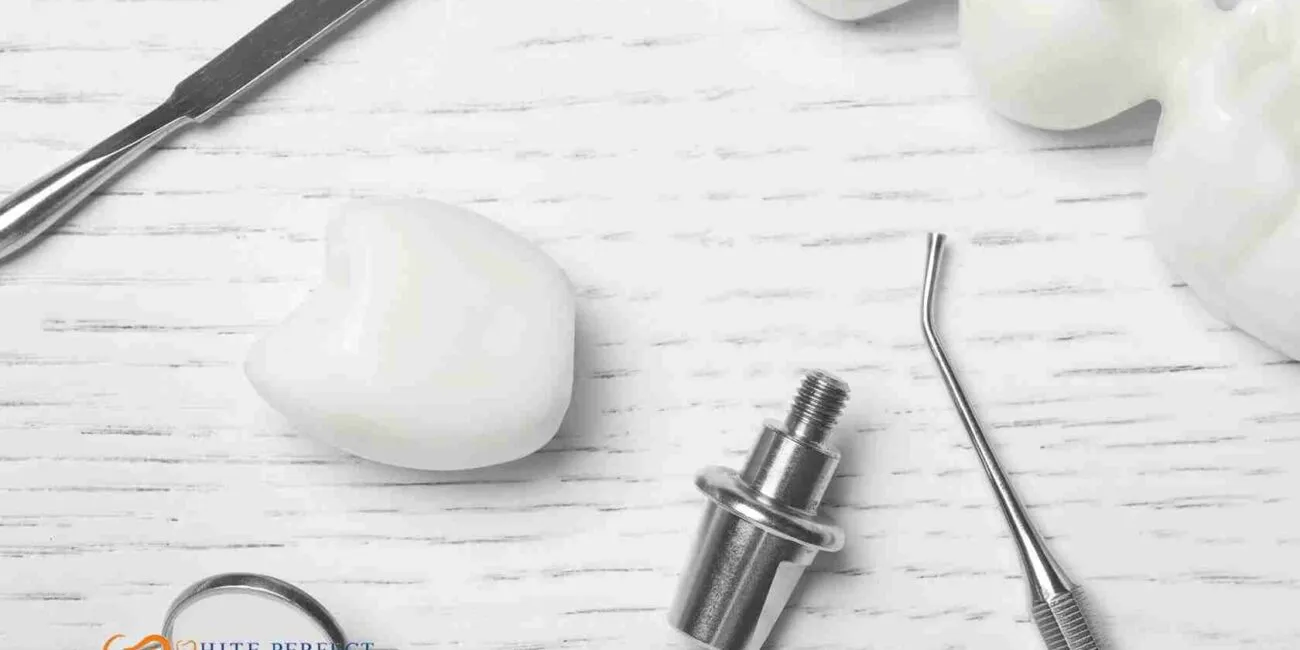

Welcome to White Perfect Dental, where your smile is our top priority. Dental restoration techniques have evolved significantly over the years, providing patients with a variety of options to restore the functionality and aesthetics of their teeth. Among these options, dental crowns and bridges stand out as two of the most effective solutions. However, patients often find themselves confused between the two. While both serve the purpose of restoring teeth, they cater to different dental needs and conditions.
This article sheds light on these dental solutions. Crowns act as protective caps, restoring strength and function to damaged teeth. Bridges, on the other hand, actively bridge the gap left by missing teeth, anchoring to healthy neighbours or implants for a stable foundation. We’ll delve deeper, exploring the definitions, purposes, and different types of crowns and bridges. We’ll also uncover the procedures involved, along with longevity and maintenance tips. This comprehensive breakdown empowers you to choose the best option for a healthy, beautiful smile.
By understanding the distinct roles and benefits of each dental restoration type, you can make a more informed decision about your dental care. At White Perfect Dental, we don’t offer a one-size-fits-all approach. We prioritise personalised consultations to craft the perfect treatment plan for each patient. This plan leverages the latest advancements in dental technology and materials to ensure optimal results. Let’s delve into the detailed differences and applications of dental crowns and bridges to help you take the first step towards restoring your smile.
When a tooth experiences weakening due to decay, cracks, or excessive wear, dentists often recommend a dental crown to the rescue. This crown acts like a protective cap, completely covering the tooth and shielding it from further damage. Besides restoring the tooth’s form and function, crowns can also provide an aesthetic enhancement, matching the colour and appearance of your natural teeth.
There are several materials used for dental crowns, each offering different benefits:
The process of getting a crown involves several steps. Initially, the dentist prepares the tooth by reshaping it under anaesthesia. The dentist will then take an impression of your tooth to create a custom crown that perfectly fits you. This crown will be placed during a follow-up visit. With proper care, including good oral hygiene and regular dental check-ups, crowns can last between 5 to 15 years or longer.
Dental bridges actively step in to bridge the gaps left behind by missing teeth. They consist of two or more crowns for the teeth on either side of the gap and a false tooth/teeth in between. Bridges find support by anchoring to either your natural teeth or dental implants.
There are three main types of dental bridges:
Installing a bridge typically requires two visits to the dentist. The first visit involves preparing the abutment teeth for crowns and taking impressions. The second visit sees the permanent bridge fitted. Bridges can last 5 to 15 years, or even longer with good oral care, which includes regular brushing, flossing, and dental visits.
Choosing between a crown and a bridge depends largely on the condition of your teeth and your specific dental needs. Crowns are ideal for cases where tooth preservation is possible, whereas bridges are necessary for filling spaces of missing teeth. Both restorations require meticulous oral hygiene practices and regular dental visits to maintain their condition and functionality.
The choice between a crown and a bridge largely depends on your specific dental needs. If you have a damaged tooth that needs protection or restoration, a crown is typically the best option. If you have one or more missing teeth, a bridge might be necessary to prevent the remaining teeth from shifting and to restore functionality and aesthetics.
Crowns and bridges won’t whiten with treatment! Unlike natural teeth, the materials used in these restorations are resistant to bleaching. It’s important to choose a shade that matches your natural teeth when getting a crown or bridge. If you’re considering whitening your teeth, it’s best to do so before the crown or bridge is made.
Generally, bridges tend to be more expensive than crowns because they involve more than one tooth. The exact cost will depend on the type of material used, the complexity of the placement, and your geographical location. It’s best to consult with your dentist for a detailed estimate based on your specific situation.
Most patients adjust to crowns and bridges within a few weeks. You might experience some initial sensitivity and a difference in how you chew with the new restoration. However, these sensations typically fade as you adjust to it.
Don’t wait! If your crown or bridge loosens, falls out, or gets damaged, contact your dentist right away. Do not attempt to fix or reattach it yourself. Your dentist will assess the situation and can typically reattach or repair the crown or bridge safely.
At White Perfect Dental, we understand the importance of a functional and aesthetically pleasing smile. Whether you need a crown to restore a damaged tooth or a bridge to fill a gap, our team of experienced dental professionals is here to guide you through each step of the process. We use the latest in dental technology and materials to ensure that you receive the highest quality care. If you’re considering dental restoration, don’t hesitate to contact us today for a consultation. Let us help you restore your smile and your confidence with the right dental solution tailored just for you. Take the first step towards a healthier, more beautiful smile by booking your appointment with White Perfect Dental now.




Fissure sealant
Dental fillings
Root canal treatment
Tooth extraction
Wisdom tooth removal
Crowns & bridges
Branches & Operating Hours
Contact Information
Make an Appointment


Fissure sealant
Dental fillings
Root canal treatment
Tooth extraction
Wisdom tooth removal
Crowns & bridges
Branches & Operating Hours
Contact Information
Make an Appointment
Copyright © White Perfect Dental Surgery Sdn Bhd (Company No. 201001012274 (1000198-P)).
Website Managed by MYSense. All Rights Reserved.